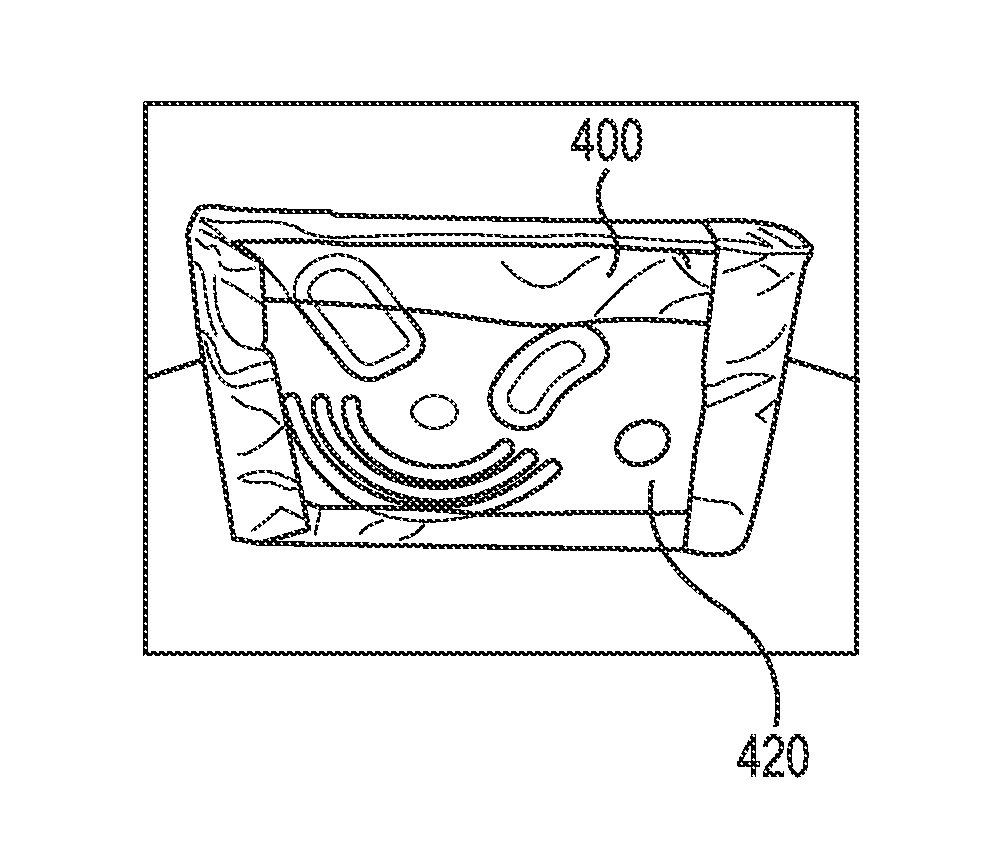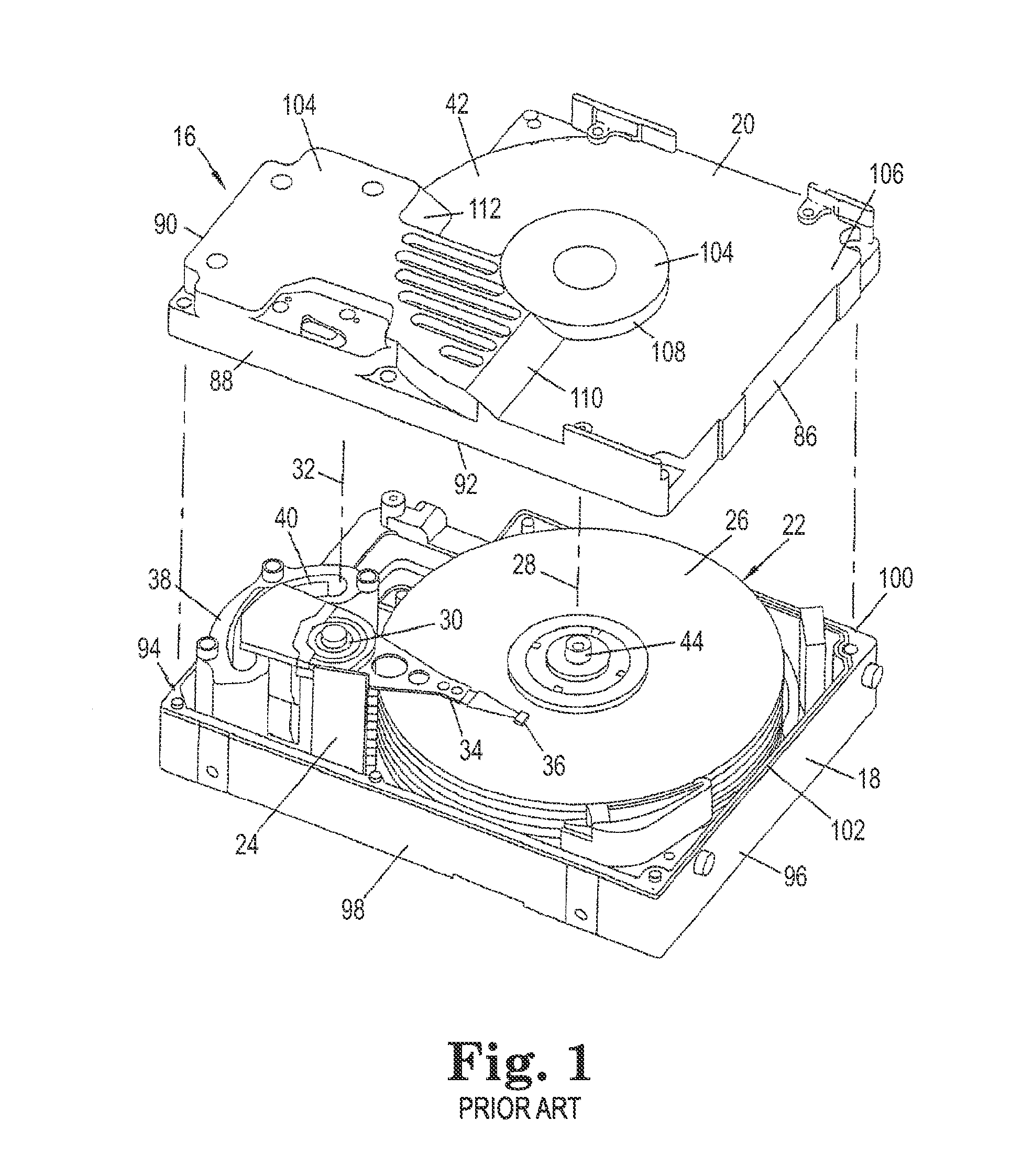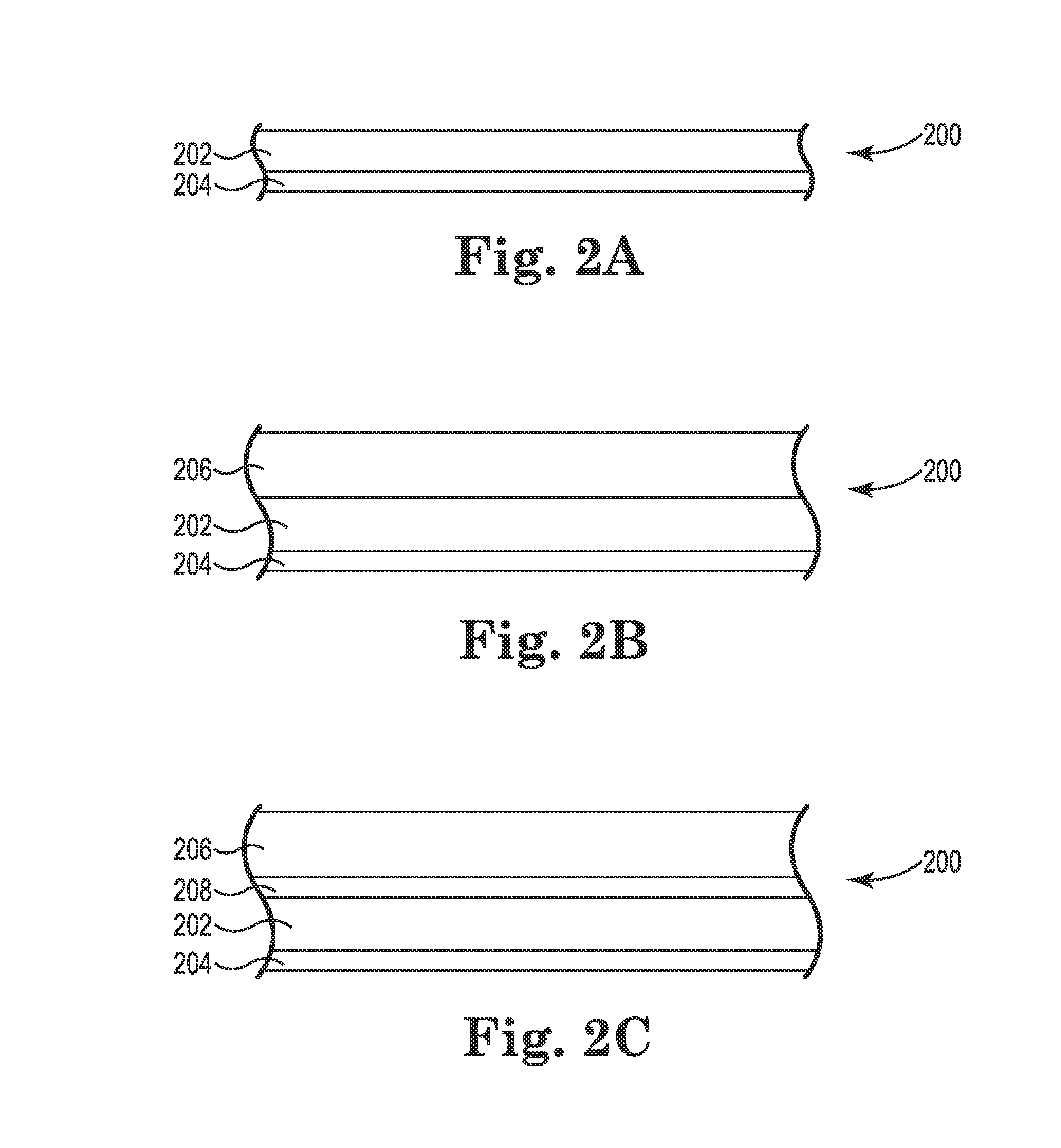While effective for sealing
inert gases within a hard disk drive, such methods typically require specialized
processing equipment and methodology for application of the
metal coating.
For example, formation of a
metal coating using sputter coating methodology requires use of costly sputter chambers for coating of the hard disk drive and tightly controlled processing conditions during manufacture of such hard disk drives.
The
spinning of the disks causes air to circulate therein, forcing any
particulates to become trapped on the filter.
However, “hermetically” sealed means that the seal is so airtight that the disk drive's
internal pressure is substantially independent of the external or
ambient pressure.
Filling disk drives to a desired pressure and concentration of gaseous components, however, can be both time-consuming and difficult.
In addition,
gasket seals and the like used to improve the seal between multiple components are often susceptible to at least some leakage.
As gas such as
helium leaks out of a sealed hard disk drive, air leaks in (or vice versa), causing undesirable effects in the operation of the disk drives—even possibly causing the disk drives to catastrophically fail.
For example, an increased concentration of air inside the hard disk drive may increase forces on the read / write head therein due to turbulent
airflow within the drive.
Further, such undesired air may cause the read / write heads to “fly” at too great a distance above the disks.
The risk of unexpected failure due to inadequate concentration of
helium within such drives is a considerable drawback to
helium-filled disk drives, particularly since the data stored within the disk drive can be irretrievably lost if the disk drive fails.
Conventional problems associated with helium-filled hard disk drives are being overcome, but solutions are slow to evolve.
Effective cooling of hard disk drives is becoming a notable challenge due to increased
power consumption and associated generation of heat in high performance devices, but with less space for efficient
airflow as device sizes decrease.
Overheating is purported to be a common cause of hard disk drive failure.
Overheating can, for example, cause platters in the drive to expand.
If the disk's read-and-write head comes in contact with the disk's surface, a catastrophic head
crash can result.
Such disturbance may interrupt, obstruct, or otherwise degrade or limit the effective performance of the circuit.
It is known that EMI frequently affects the reception of AM radio in urban areas.
In conventional disk drives, unwanted and potentially problematic EMI wavelengths can enter a disk drive through a number of places.
Junctions where components of the hard disk drive housing (e.g., cover and base) meet are another potential path of gas leakage.
If all of these measures still leave too much EMI, shielding such as using
radio frequency (RF)
gasket seals (which are often very expensive) and
copper tape has been employed.
While the use of metal components undesirably increases the overall weight of an apparatus, use of metal components has been conventionally mandated in the hard disk drive industry due to the EMI sensitivity of mechanical
spinning components therein.
While the aforementioned problems typically arise based on events and / or materials external to a disk drive, other problems may arise based on events and / or materials internal to a disk drive.
That is, design of components within conventional disk drives can contribute to hard disk drive failure.
For example, plastic components are susceptible to
outgassing and components made from
conductive materials are prone to shedding of particles, both of which can cause catastrophic disk failure.
 Login to View More
Login to View More  Login to View More
Login to View More 


